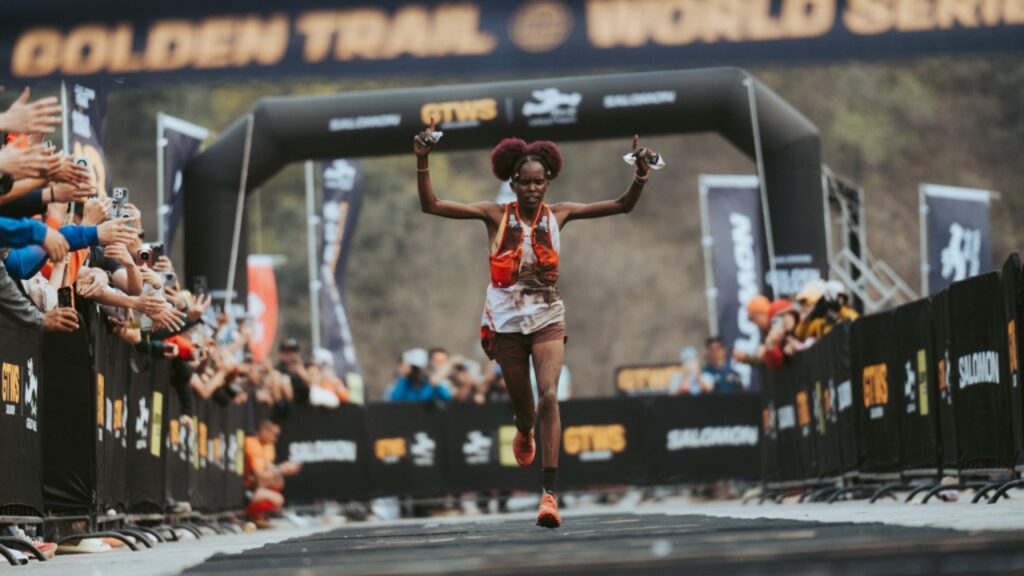The Golden Trail World Series continues with its seventh stop in 2025, set against the challenging backdrop of Mandarfen in the Austrian Alps. This locale, known for its vibrant alpine scenery, will host the Salomon Pitz Alpine Glacier Trail, covering a distance of 23 kilometers and featuring over 1,700 meters of elevation gain. As the series approaches its Grand Final in Trentino in October, the stakes are high for both elite athletes and those looking to secure their standings for UTMB qualification.
The course itself is expected to test not just physical endurance but also technical agility. The route comprises three loops that encompass varying conditions—a configuration that not only challenges the athletes but also allows spectators to track the race more effectively. The first loop, a manageable 5 km with a modest climb, eases competitors into the more demanding aspects of the course that follow. Athletes must ensure their pacing aligns with the terrain, preserving energy for the punishing second loop. Here, a significant ascent through the Hirschtal valley introduces relentless gradients exceeding 30%, culminating in a steep climb to Grubenkopf peak. This segment, covering 13 km and gaining 1,300 meters, requires a level of fortitude suited for seasoned trail runners. The final loop delivers a fast descent back to the start/finish area, providing an opportunity for a tactical push, but only for those who have successfully managed their energy throughout the preceding segments.
In the women’s elite race, the competition is particularly competitive. Caroline Kimutai made a strong impression earlier this season by winning her debut race in the series at the Great Wall Trail Race. Her adaptability on diverse terrains makes her a contender for the podium, and it will be interesting to see how her strategy unfolds in the demanding conditions of Austria. Faith Kiplagat joins the field fresh off a win at the Marathon du Mont Blanc, looking to capitalize on her current form for a solid finish. Meanwhile, Malen Osa and Naomi Lang present tactical variants in their race strategies: where Osa aims to garner crucial points to enhance her standing before the Grand Final, Lang’s technical prowess in rough terrain could translate well on this challenging course.
In the men’s elite race, current series leader Elhousine Elazzaoui’s absence opens the field significantly, allowing Patrick Kipngeno to seize the moment. Known for his podium finishes this season, Kipngeno’s tactical approach will likely involve maintaining strong positioning through the challenging climbs, capitalizing on his previous experiences in high-altitude races. His consistency across multiple races gives him a solid aim for victory, which could yield another significant point boost ahead of the series finale.
Runners must recognize that this race’s technical segments require not just physical preparation but also astute strategy. Christian Allen, returning for his second GTWS race this year, emphasizes the importance of not just endurance but downhill competence—skills that could yield critical advantages as runners navigate the course’s descent. Athletes like Cesare Maestri demonstrate that existing injuries can shape race strategy; returning competitors must gauge their comfort along technical sections, mindful not to overexert too early in the race.
Considering the race conditions, athletes should also evaluate their gear choices for reliability and weight. Innovations in footwear and nutrition are notably impactful at this level; efficient load management can influence overall performance. Runners should pay close attention to their hydration and nutrition strategies, as altitude and exertion will demand a tailored approach to stay in optimal racing condition. Analyzing past performances on similar terrain will provide insights into pacing strategies and may guide decision-making processes in real-time.
The Salomon Pitz Alpine Glacier Trail epitomizes the intricacies of mountain racing. From course profile assessments to understanding the variable weather conditions during alpine competitions, every detail matters. Competitors must execute a nuanced balance of energy conservation and performance maximization through tactical pacing, gear innovation, and an unwavering focus on strategic execution.
In summarizing the key takeaway from this race and its implications for future mountain ultras, runners should prioritize adaptability and strategic pacing to navigate the physical and mental demands of varied terrains. Recognizing the significant influence that terrain-specific strategies can have on overall performance will be crucial for achieving success in upcoming races, particularly for those with sights set on qualifying for events like the UTMB.
